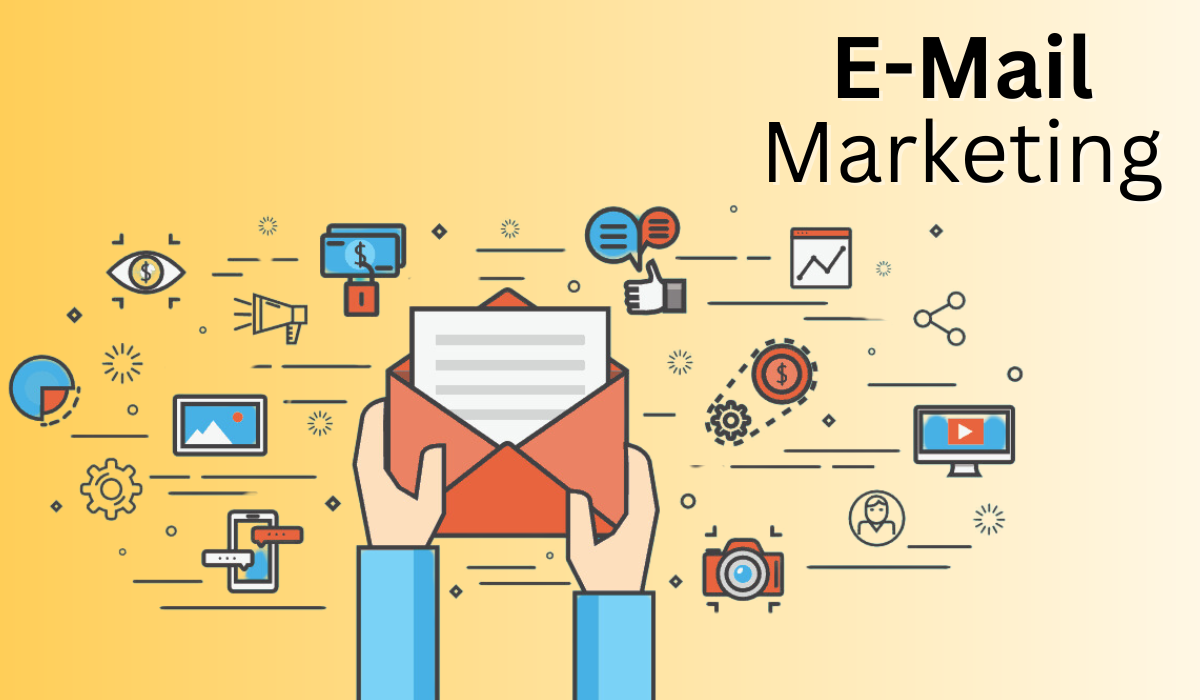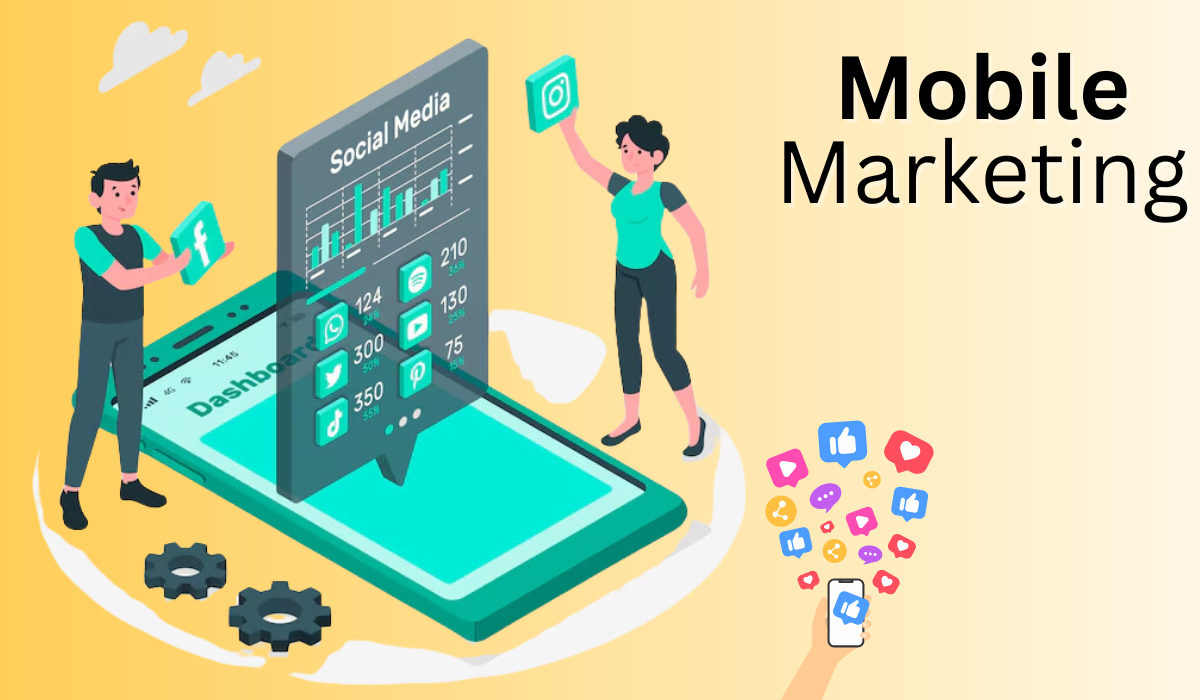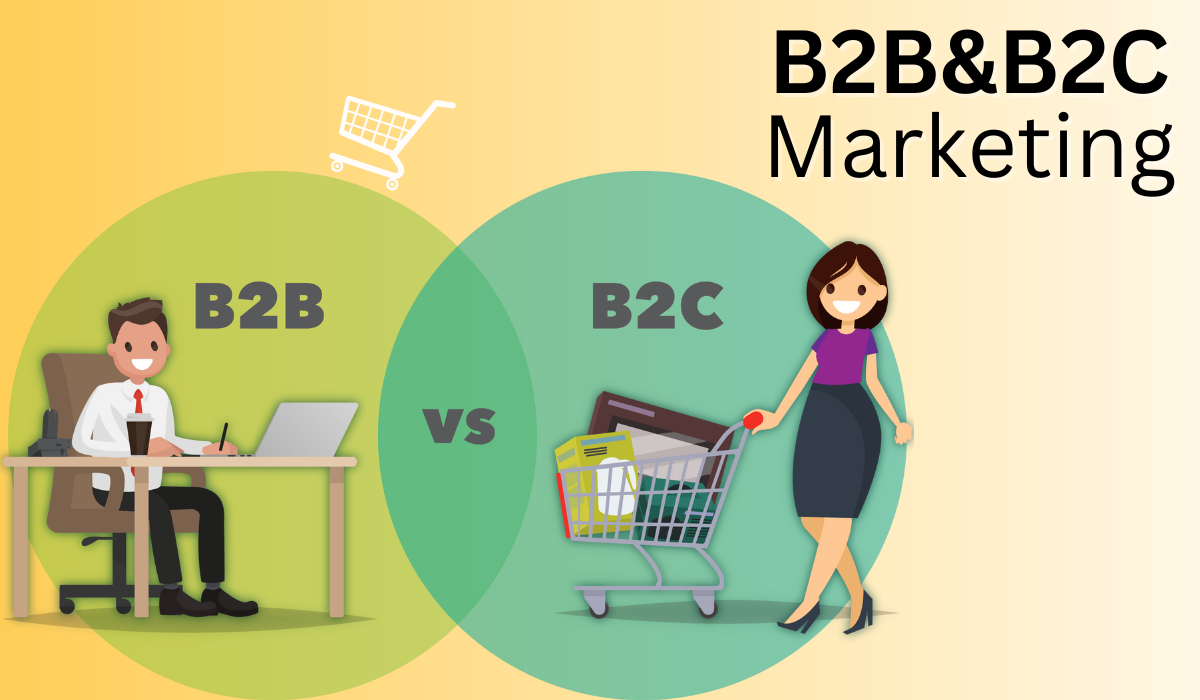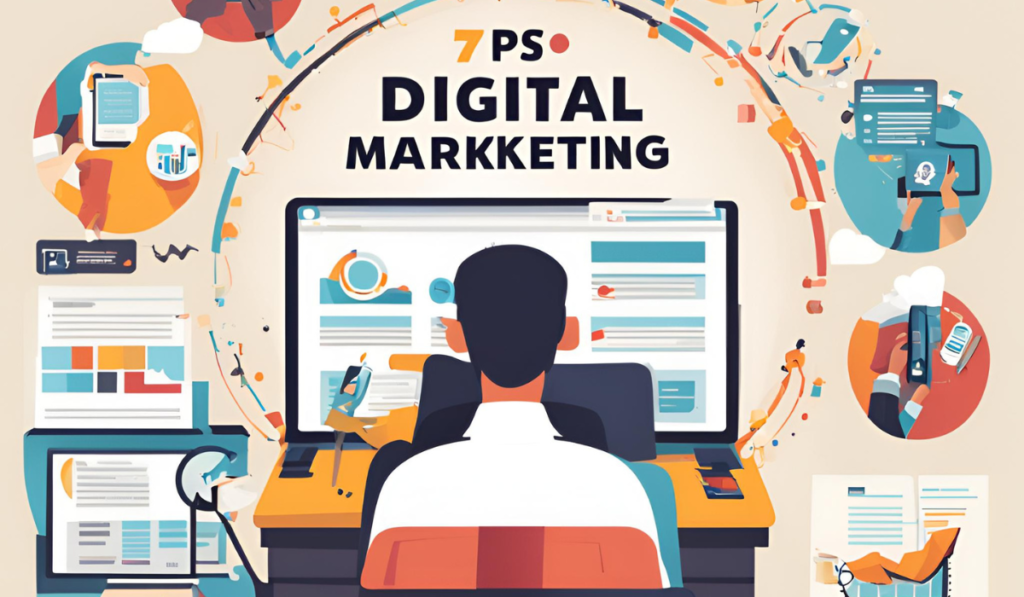Digital marketing, also known as digital marketing or Internet marketing, is the process of promoting products, services, or brands using the Internet. It encompasses various strategies and tactics that leverage Digital platforms to reach and engage with potential customers. These strategies can include creating Digital content, running advertisements on websites, optimizing your website for search engines, engaging with audiences on social media, and more.
In today’s digital age, Digital marketing is crucial because the internet is where people spend a significant portion of their time. By utilizing Digital marketing, businesses can connect with their target audience more effectively and efficiently.
Types of Digital Marketing
Search Engine Optimization (SEO): SEO involves optimizing your website to rank higher in search engine results pages (SERPs) for relevant keywords. As a result, this helps increase organic (non-paid) traffic to your website. Key components of SEO include keyword research, on-page optimization, and building high-quality backlinks. Specifically, keyword research identifies the best terms to target, while on-page optimization ensures your content and site structure are search-engine-friendly. Additionally, building high-quality backlinks from reputable sites boosts your site’s authority and ranking.
Content Marketing: Content marketing focuses on creating valuable and relevant content to attract and engage your target audience. This can include blog posts, videos, infographics, podcasts, and more. The goal is to provide information that solves problems, answers questions and adds value to your audience’s lives.
Social Media Marketing: Social media marketing involves using platforms like Facebook, Instagram, Twitter, LinkedIn, and others to connect with your audience. Then It includes creating and sharing content, running paid ads, and engaging with users through comments and messages.
Pay-Per-Click (PPC): PPC is a form of Digital advertising where you pay a fee each time someone clicks on your ad. These ads can appear on search engines, social media platforms, and other websites. So, Google Ads is one of the most popular PPC platforms.
Affiliate Marketing: In affiliate marketing, you partner with individuals or businesses (affiliates) who promote your products in exchange for a commission on sales generated through their referrals. This can help you reach a broader audience without upfront advertising costs.
Email Marketing: Email marketing involves sending promotional messages to a list of subscribers. These messages can include newsletters, product updates, special offers, and more. Email marketing is effective for nurturing leads and maintaining relationships with existing customers.
Mobile Marketing: Mobile marketing targets users on their smartphones and tablets. It includes strategies like SMS marketing, mobile app advertising, and optimizing your website for mobile devices. Given the high usage of mobile devices, this form of marketing is increasingly important.
Influencer Marketing: Influencer marketing involves partnering with popular individuals (influencers) who have a large following on social media or other digital platforms. Consequently, these influencers promote your products to their audience, leveraging their credibility and reach. Thus, by collaborating with influencers, you can effectively tap into their established networks and enhance your brand’s visibility.
Search Engine Optimization (SEO)
SEO is crucial for making your website more visible to people who are searching for products or services like yours on search engines such as Google. Here are the main aspects of SEO :
- Keyword Research: Identifying the words and phrases that people use to search for products or services in your industry. Use tools like Google Keyword Planner, Ahrefs, or SEMrush to find relevant keywords.
- On-Page Optimization: Make sure your website’s content and structure are optimized for search engines. This includes using keywords in your titles, headings, and meta descriptions, as well as ensuring your website is mobile-friendly and has fast loading times.
- Content Creation: Regularly publishing high-quality content that is valuable to your audience. This can help attract more visitors to your site and improve your search engine rankings.
- Link Building: Getting other reputable websites to link to your content. These backlinks can improve your site’s authority and help it rank higher in search results.
- Technical SEO: Ensuring that your website’s technical elements, such as site speed, mobile optimization, and secure connections (HTTPS), are optimized for search engines.
For your website to appear higher in search results on Google and other search engines, we provide Search Engine Optimization Services. This increases the number of individuals who can find your website, which in turn increases traffic and potential clients.
Content Marketing
Content marketing focuses on creating and distributing valuable, relevant, and consistent content to attract and retain a clearly defined audience. Here are key components of a successful content marketing strategy :
Content Types: Blogs, videos, infographics, podcasts, eBooks, whitepapers, and social media posts are all examples of content types you can use. Each type of content can serve different purposes and engage your audience in various ways.
Content Planning: Develop a content calendar that outlines what content will be published and when. This helps ensure a consistent flow of content and keeps your audience engaged.
Quality over Quantity: Focus on creating high-quality content that provides real value to your audience. This can help build trust and establish your brand as an authority in your industry.
Distribution Channels: Sharing your content on the right channels to reach your target audience. This can include your website, social media platforms, email newsletters, and other Digital communities.
To make your brand stand out and maintain consumer engagement, we offer excellent Content Marketing Services. In order to ensure that your content resonates with and engages your target audience, we employ a complete strategy.
Social Media Marketing
Social media marketing involves using social media platforms to connect with your audience, build your brand, and drive traffic to your website. Here are the key components :
Platform Selection: Choose the right platforms based on where your audience spends their time. So, Popular platforms include Facebook, Instagram, Twitter, LinkedIn, and Pinterest.
Content Creation: Develop engaging content tailored to each platform. This can include text posts, images, videos, stories, and live streams.
Community Engagement: Actively engage with your audience by responding to comments, messages, and mentions. Building a community around your brand can foster loyalty and advocacy.
Paid Advertising: Running paid ads on social media platforms to reach a larger audience. These ads can be highly targeted based on demographics, interests, and behaviors.
We provide Social Media Marketing Services that are intended to strengthen your brand’s relationship with customers and help you meet your marketing objectives. So that Social media is an effective tool for creating connections, raising awareness online, and promoting engagement.
Pay-Per-Click (PPC) Advertising :
PPC advertising allows you to display ads on search engines and other platforms, paying only when someone clicks on your ad. Key components include
Keyword Selection: Choosing the right keywords to target with your ads. These should be relevant to your products or services and have a high likelihood of attracting clicks.
Ad Creation: Crafting compelling ad copy that encourages users to click. This includes writing attention-grabbing headlines, persuasive descriptions, and clear calls to action.
Landing Pages: Creating landing pages that are relevant to your ads and optimized for conversions. A good landing page provides the information the user is looking for and encourages them to take action, such as making a purchase or filling out a form.-
Bid Management: Setting and adjusting bids for your keywords to ensure your ads appear in the desired positions. Tools like Google Ads allow you to automate this process.
We provide PPC Advertising Services to assist you in efficiently and rapidly reaching your target audience. With the pay-per-click (PPC) online advertising strategy, you are charged a fee each time an ad is clicked. Consequently, it’s a potent technique for increasing website traffic and lead generation. By leveraging PPC, you can effectively drive targeted visitors to your site and boost your conversion rates.
Affiliate Marketing :
Affiliate marketing involves partnering with affiliates who promote your products in exchange for a commission. Here are key aspects :
Affiliate Recruitment: Finding and partnering with individuals or businesses who can effectively promote your products. This can include bloggers, influencers, and other Digital marketers.
Commission Structure: Setting up a commission structure that incentivizes affiliates to promote your products. This can be a percentage of sales or a fixed amount per sale.
Tracking and Reporting: Using tracking tools to monitor the performance of your affiliates and ensure they are properly credited for their referrals.
Support and Resources: Provide your affiliates with the resources they need to succeed, such as marketing materials, product information, and ongoing support.
Email Marketing :

Email marketing involves sending promotional messages to a list of subscribers. Here are key components :
Email List Building: Growing your email list by encouraging visitors to subscribe. This can be done through sign-up forms on your website, social media, and other channels.
Segmentation: Dividing your email list into smaller segments based on criteria like demographics, purchase history, and engagement. This allows you to send more targeted and relevant messages.
Email Content: Creating engaging email content that provides value to your subscribers. This can include newsletters, product updates, special offers, and personalized recommendations.
Automation: Using email marketing software to automate your campaigns. This can include welcome emails, drip campaigns, and triggered emails based on user actions.
Mobile Marketing

Mobile marketing targets users on their smartphones and tablets. Here are key aspects :
Mobile-Friendly Website: Ensuring your website is optimized for mobile devices. This includes responsive design, fast loading times, and easy navigation.
SMS Marketing: Sending promotional text messages to your customers. This can include special offers, reminders, and alerts.
Mobile Apps: Develop a mobile app for your business to engage with your audience. Apps can offer features like push notifications, in-app purchases, and personalized content.
Location-Based Marketing: Using location data to target users with relevant offers and information. This can include geotargeting and geofencing.
B2B vs. B2C Marketing

- B2B (Business to Business): B2B marketing targets other businesses rather than individual consumers. It often involves longer sales cycles, higher price points, and focuses on building relationships and demonstrating return on investment (ROI). Content in B B marketing is usually more data-driven and educational.
- B2C (Business to Consumer): B2C marketing targets individual consumers. It tends to have shorter sales cycles and is often more emotionally driven. B2C marketing strategies focus on creating engaging, entertaining, and persuasive content to prompt immediate purchase decisions.
Influencer Marketing
Influencer marketing involves partnering with popular individuals who have a large following on social media or other Digital platforms. Key components include :
- Influencer Identification: Finding influencers who align with your brand and have an engaged audience that matches your target market.
- Collaboration: Working with influencers to create content that promotes your products. This can include sponsored posts, product reviews, and social media takeovers.
- Compensation: Determining how you will compensate influencers. This can include monetary payments, free products, or a combination of both.
- Tracking and Measurement: Monitoring the performance of your influencer campaigns and measuring their impact on your goals.
Benefits of Digital Marketing
- Wide Reach: Digital marketing allows you to connect with a global audience, breaking down geographical barriers.
- Cost-Effective: Many Digital marketing tactics, such as social media marketing and email marketing, can be more affordable than traditional advertising methods.
- Measurable Results: Tools like Google Analytics and social media insights help you track the performance of your campaigns and make data-driven decisions.
- Personalization: By collecting data about your audience, you can create personalized marketing messages that resonate more deeply with them.
- Real-Time Interaction: Digital platforms enable you to engage with your audience instantly, whether through social media comments, live chats, or email responses.
- Enhanced Customer Engagement: Digital marketing allows for two-way communication, fostering stronger relationships and improving customer loyalty.
- Scalability: You can easily scale your Digital marketing efforts up or down based on your business needs and budget.
How to Create a Digital Marketing Strategy
- Set Clear Goals: Define what you want to achieve with your Digital marketing efforts. Goals could include increasing website traffic, generating leads, boosting sales, or improving brand awareness.
- Identify Your Audience: Understand who your target customers are. Consider factors like age, gender, location, interests, and buying behavior. Creating detailed buyer personas can help you tailor your marketing messages more effectively.
- Create a Budget: Determine how much you can afford to spend on your Digital marketing efforts. Allocate funds to different channels and tactics based on your goals and audience preferences.
- Choose Your Channels: Decide which Digital marketing methods to use. This could include a mix of SEO, content marketing, social media marketing, PPC, email marketing, and more. Choose channels that are most likely to reach and engage your target audience.
- Develop a Content Plan: Plan the type of content you will create and share. This could include blog posts, videos, social media updates, email newsletters, and more. Ensure your content is valuable, relevant, and aligned with your audience’s interests.
- Implement and Execute: Put your plan into action. Create and distribute content, run ads, engage with your audience on social media, and monitor your campaigns’ performance.
- Analyze and Improve: Continuously track the performance of your campaigns using analytics tools. Look at metrics like website traffic, conversion rates, social media engagement, and email open rates. Use this data to make improvements and optimize your strategy over time.
Building an Effective Digital Marketing Strategy
Set Clear Goals: Start by defining what you want to achieve with your digital marketing efforts. For instance, common goals include increasing website traffic, generating leads, boosting sales, improving brand awareness, and engaging with your audience. Therefore, make sure your goals are specific, measurable, achievable, relevant, and time-bound (SMART).
Identify Your Audience: Understanding your target audience is crucial for effective marketing. To achieve this, create detailed buyer personas that outline the demographics, interests, behaviors, and pain points of your ideal customers. Consequently, this information will help you tailor your marketing messages and choose the right channels to reach them.
Create a Budget: Determine how much you can afford to spend on your Digital marketing efforts. Allocate funds to different channels and tactics based on your goals and audience preferences. Be sure to include costs for tools, software, and any external services you may need.
Choose Your Channels: Based on your audience and goals, decide which Digital marketing methods to use. This could include a mix of SEO, content marketing, social media marketing, PPC, email marketing, mobile marketing, and influencer marketing. Each channel has its strengths and can complement your overall strategy.
Develop a Content Plan: Plan the type of content you will create and share. This could include blog posts, videos, social media updates, email newsletters, and more. Ensure your content is valuable, relevant, and aligned with your audience’s interests. Use a content calendar to schedule your content and maintain consistency.
Implement and Execute: Put your plan into action. Create and distribute content, run ads, engage with your audience on social media, and monitor your campaigns’ performance. Be flexible and ready to adjust your strategy based on real-time feedback and results.
Analyze and Improve: Continuously track the performance of your campaigns using analytics tools. Look at metrics like website traffic, conversion rates, social media engagement, and email open rates. Use this data to make improvements and optimize your strategy over time.
Conclusion
Digital Marketing is a powerful tool for reaching and engaging with your target audience in today’s digital age. Specifically, by understanding the different types of Digital Marketing, setting clear goals, and creating a well-rounded strategy, you can effectively promote your brand, drive traffic to your website, and achieve your business objectives. Additionally, remember to continuously analyze and improve your efforts in order to stay ahead in the ever-evolving digital landscape.

